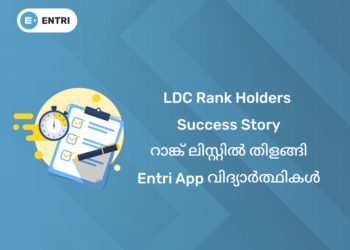Table of Contents
For many innovative software engineers, working at HCL is the dream. Aspirants can familiarise themselves with potential interview questions by practicing with HCL interview questions. The goal of the HCL interview process is to identify and exclude engineers that possess a strong technical background and a self-starting mindset. A candidate that can rapidly pick up new skills, learn from mistakes, and come up with creative ideas is great for the organisation. To ace the most difficult rounds, prepare the most expected HCL interview questions.
Experience the power of our python programming course with a free demo – enroll now!
Introduction
HCL Technologies is an IT services and consulting firm that was once known as Hindustan Computers Limited. With its headquarters located in Noida, India, this service-oriented business has operations in 45 countries.This business assists companies in rethinking their operations for the digital era. They support businesses with digital, analytics, cloud, Internet of Things, automation, cybersecurity, infrastructure management, and engineering services strategies. It works in a number of industries, including banking, autos, healthcare, media, and entertainment. Among India’s top 20 largest publicly traded corporations is HCL Technologies. The Forbes Global 2000 list includes it.
Why you Should Choose HCL?
If innovation and culture are what interest you, working at HCL would be a great fit. Employees’ personal and professional growth is given careful consideration here. Their emphasis on individuals is what has given their culture the energy and social influence that it has.
The belief system they adhere to is that of leadership. This indicates that by fostering ideas, staff members are at the forefront of innovation. Numerous important facilitators for achieving corporate impact have emerged as a result of the innovation and collaboration culture.
Career Options for Python in HCL
In fact, it fosters personal development by pushing boundaries and opening doors for individuals. One of the most significant corporations in the world is acknowledged to be HCL Technologies. They support motivating, empowering, and inspiring all of our staff members. HCL Technologies has a fantastic staff and is expanding swiftly. Their goal is to become the world’s leading software firm.
Career Opportunities
The numerous options for career growth that HCL Technologies workers have is one of the main draws of working there. The organisation provides a wide selection of workshops, certificates, and training programmes to assist staff in developing their abilities and staying current with emerging technology and market trends. Within the company, HCL Technologies offers opportunities for professional development and promotion, regardless of experience level.
- Possibilities for growth and learning: HCL employees value the abundance of training materials and development initiatives offered.
- Collaborative and encouraging work environment: Many workers emphasise HCL’s friendly and encouraging work environment, which places a strong emphasis on respect and teamwork.
- Project exposure: Workers enjoy being exposed to a variety of projects and clients since it gives them the chance to expand their knowledge and expertise.
- Acknowledgment and incentives: HCL uses a range of incentive schemes, performance bonuses, and staff appreciation programmes to acknowledge and incentivize employee contributions.
HCL interview Process
1. Interview Process
- Written/ Aptitude Test
- Group Discussion (GD)
- Technical Interview
- HR
2. Interview Rounds
Written/ Aptitude Test:
The first round’s questions focus on numeric aptitude and verbal reasoning. These are online tests that take the form of multiple-choice questions. Typically, this stage is reserved for new applicants; experienced individuals should not apply.
Group Discussion:
Group discussions are a crucial component of the hiring process, as they allow recruiters to determine whether an applicant possesses the personality qualities that a company is looking for in its workforce. Teams are established and given a common debate or argument topic for this round.
One might decide whether they wanted to discuss arguments in favour of or against the subject at hand. Another possibility is a broad conversation regarding a recent event. Among the qualities seen in this round were teamwork, quick thinking, dispute resolution skills, familiarity with current events, and so forth.
Technical Interview Round:
In the technical round, questions pertaining to UNIX, LINUX, Java, C, and C++ are all possible. Being meticulous with your foundations would be a smart technique to help you win this round. Below is a collection of some of the technical round’s questions.
You may be asked questions on your current year initiatives by the interviewers as well. The majority of the inquiries for an experienced candidate will come from their prior employment history and resume.
HR Round:
This is the last round of interviews for HCL. The recruiters ask broad inquiries in this round. They assess criteria such as your interest in becoming a member of the organisation among these. They inquire about your reasons for wanting to work for their company as well as your own objectives and aspirations.
HCL Interview Questions for Freshers in Python
Q1. Discuss what type of language is Python?
Answer:
- Python is an object-oriented, interpreted, interactive programming language. There are dynamic typing, classes, modules, exceptions, and very high-level dynamic data types.
- Python has dynamic typing and is an interpreted language. These languages are frequently called “scripting” languages because the code is not transformed into a binary format. When I say dynamically typed, I mean that types are discovered at runtime by the interpreter, negating the need for them to be declared while code.
- Python’s compact, learnable syntax prioritises readability, which reduces the cost of software maintenance.
- Python offers packages and modules that facilitate code reuse and programme modularity. You can download and share the Python interpreter and its extensive standard library in source or binary form for free on all major platforms.
Q2. Define PEP 8?
Answer: A document called PEP 8 (often referred to as PEP8 or PEP-8) describes best practices and guidelines for creating Python code. Guido van Rossum, Barry Warsaw, and Nick Coghlan wrote it in 2001. PEP 8’s primary objective is to improve the readability and consistency of Python code.
The term Python Enhancement Proposal (PEP) refers to the type of proposal that is available in a spreadsheet format. A document known as a Python Enhancement Proposal (PEP) describes new features that have been proposed for Python and provides community-facing details about aspects of the language including style and design.
Q3. What do you meant by namespace in Python?
Answer: A namespace in Python is a system that gives every item in the system a special name. One may think of a method or a variable as an object. A Python dictionary serves as the storage for Python’s unique namespace. As an example, let’s examine the directory-file system architecture of a computer. It should go without saying that different folders may contain files with the same name. On the other hand, if one wishes, they can be directed to the file by providing its absolute path.
Q4. What is PYTHON PATH?
Answer: With the use of the environment variable PYTHONPATH, users can expand the list of directories in Python’s sys.path directory. It is, in essence, an environment variable that is initialised prior to the Python interpreter starting.
Q5. What are the Python modules?
Answer: A single file containing definitions and commands for Python is called a module. You can define variables, classes, and functions in a module. Executable code can also be a part of a module. Code that is arranged into modules is simpler to use and comprehend. It also arranges the code logically.
Q6. What are local variables and global variables in Python?
Global variables are defined outside of any function and have a global scope, while local variables are declared inside a function and have a scope that is limited to that function alone. Stated differently, global variables are accessible across the programme and in every function, while local variables are only available within the function in which they were generated.
Local Variables
Variables defined inside a function that are exclusive to that function are referred to as local variables. It cannot be accessed outside of the function.
Global Variables
Global variables are those that are available throughout the programme, that is, both inside and outside of each function, and that are defined independently of any particular function.
Q7. Define Flask and its benefits?
An open-source web framework is called Flask.A collection of technologies, frameworks, and tools called Flask is used to create web applications. This online app is built on a web page, wiki, large web-based calendar programme, or a for-profit website. Since Flask is a micro-framework, it doesn’t rely much on external libraries.
Benefits:
Flask is an excellent web application framework for a number of reasons. Such as
- Support for unit testing that is integrated
- Both a quick debugger and an integrated development server are included.
- Dispatching peaceful requests using a Unicode foundation
- It is okay to utilise cookies.
- WSGI 1.0 compliant jinja2 templating
- The flask also allows you total control over how your project develops.
- Function for parsing HTTP requests
- With a few additions, Flask is a simple and adaptable web framework that is easy to integrate.
- To connect, you can use your preferred device. ORM Basic’s primary API is logically laid out and well-designed.
- Incredibly flexible
- The flask is simple to utilise during the manufacturing process.
Q8. Which is better Django or Flask?
Django is more popular because it has plenty of functionality out of the box, making complicated applications easier to build. Django is best suited for larger projects with a lot of features. The features may be overkill for lesser applications.
If you’re new to web programming, Flask is a fantastic place to start. Many websites are built with Flask and receive a lot of traffic, although not as much as Django-based websites. If you want precise control, you should use flask, whereas a Django developer relies on a large community to produce unique websites.
Q9. What is Django architecture
Answer: Three components make up Django’s Model-View-Controller (MVC) architecture:
1. Model
The conceptual data structure that supports the entire programme is called the Model, and it is represented by a database (usually relational databases like MySql, Postgres).
2. View
The user interface, or View, is what you see when you use your browser to view a website. The files that represent them are HTML, CSS, and Javascript files.
3. Controller
Data must be sent from the model to the view by the Controller, which serves as a bridge between the two.
Q10. What is Scope in Python?
Consider scope to be the father of a family; everything has a scope. This is a block of code that, regardless of how many objects are declared, remains relevant, according to a formal definition. Here are a few instances of similar situations:
- Local Scope: A variable that is created inside a function and is only used inside that function is considered to be part of the function’s local scope.
Example1:
def harshit_fun():
b = 200
print (b)
harshit_func()
200- Global Scope: A variable is said to be in the global scope when it is created within the main body of Python code. The best thing about global scope is that it may be accessed from any location in the Python code, whether it is local or global.
Example2:
b = 200
def harshit_func():
print (b)
harshit_func()
print (b)
- Nested Function: Also called a function inside a function, this is illustrated in the preceding example where the variable y is only accessible inside the function and not outside of it.
Example3:
def first_func():
b = 100
def nested_func1():
print(b)
nested_func1()
first_func()
- Module Level Scope: This basically describes the global objects that are now accessible within the programme for the module in question.
- The word “outermost scope” refers to all of the program’s built-in names that you can call.
Experience the power of our python programming course with a free demo – enroll now!
Q11. List the common built-in data types in Python?
The most popular built-in datatypes are listed below:
- Numbers: Comprised of complex, floating-point, and integer numbers.
- List: As we’ve already covered a little bit about lists, a list is defined as an ordered, modifiable sequence of elements, the elements of which can be of multiple data kinds.
Example4:
list = [200, “Entri App”, 50]Tuples: Similar to lists, this is also an ordered series of elements, however unlike lists, tuples are unchangeable once stated.
Example5:
tup_2 = (100, “ Entri App ”, 20) String: The string of characters stated inside single or double quotations is known as this.
Example6:
“Hi, Entri App is a Learning Platform”
‘Hi, Entri App is a Learning Platform’Sets: In essence, sets are collections of distinct objects with a non-uniform order.
Example7:
set = {2,3,4}Dictionary: Values are always kept in dictionaries as key-value pairs, where a key can be used to access each value.
Example8:
[10] harshit = {1:’sports’, 2:’video_games’, 3:’contents’} Boolean: True and False are the only two possible boolean values.
Q12. What are global, protected, and private attributes in Python?
Variables are another name for a class’s characteristics. In Python, there are three types of access modifiers for variables:
a. Public: Public variables can be accessed from anywhere, both within and outside of the classroom.
b. private: Variables designated as private can only be accessed by members of the current class.
c. protected: Only the variables included in the current package can access variables designated as protected.
Moreover, attributes are categorised as:
- Local attributes can only be accessed within the code-block or method in which they are defined.
- Global attributes can be accessed from anywhere and are defined outside of the code-block or procedure.
class Mobile:
a1 = "Android Mobiles" //Global attributes
def price(self):
a2 = "mobiles" //Local attributes
return m2
Android_a = Mobile()
print(Android_a.a1)Q13. What are Pandas?
Answer: A fairly extensive collection of data structures for data-based operations can be found in the open-source Python package called Pandas. Because of their amazing features, pandas are a great fit for any data activity, be it academic research or the resolution of challenging business issues. Pandas are among the most vital tools to master since they can handle a wide range of file types.
Q14. What is a Pandas Series?
Answer: Panda’s one-dimensional data structure, Series, can hold nearly any kind of data. It’s like a column in Excel. It is utilised for single-dimensional data manipulations and supports several procedures.
Making a series out of data
Code:
import pandas as pds
data=["2",3,"four",5.0]
series=pds.Series(data)
print(series)
print(type(series))Q15. What is classifier?
Answer: A classifier is used to predict the class of any data point. Classifiers are special hypotheses that are used to assign class labels to any particular data point. A classifier often uses training data to understand the relation between input variables and the class. Classification is a method used in supervised learning in Machine Learning.
Q16. How can one obtain a dictionary’s whole list of keys?
Answer: The following is one method we can use to obtain a list of keys: dict.keys()
Every key that is available in the dictionary is returned by this method.
dict = {1:x, 2:y, 3:z} dict.keys()Output: [1, 2, 3]
Q17. How do you capitalise a string’s initial letter?
Answer: To capitalise a string’s first character, use the capitalise() function. The original string is returned if the first character is already capitalised.
Syntax:
string_name.capitalize() |
Example:
a = “Entri App”
print(a.capitalize())Q18. In Python, how may an element be inserted at a specific index?
Answer: The insert() function is a built-in Python function.
An element can be inserted using it at a specified index.
Syntax:
list_name.insert(index, element) |
Example:
list = [ 0,1, 2, 3, 4, 5, 6, 7 ]
#insert 12 at 5th index
list.insert(5, 12)Output : [0,1,2,3,4,12,5,6,7]
Q19. How can duplicate items be eliminated from a list?
Answer: Duplicate elements in a list can be eliminated in a number of ways. However, the most popular one is to use the set() function to turn a list into a set, and the list() function to return the set to a list as needed.
Example:
list1 = [1, 2, 2, 3, 4, 5, 6, 3]
list2 = list(set(list1))
print (“The list without duplicates : ” + str(list2))Q20. What is recursion?
Answer: A function that calls itself once or more times within its body is called recursive. One crucial requirement for using a recursive function in a programme is that it must end; otherwise, an infinite loop issue might arise.
Q21. Describe List Comprehension in Python.
Answer: One list can be changed into another list using list comprehensions. The new list can contain elements conditionally, and each entry can be changed as necessary. It is made up of an expression surrounded in brackets that goes to a for clause.
Example:
list = [a for a in range(100)]
print listExperience the power of our python programming course with a free demo – enroll now!
🚀 Start Coding Today! Enroll Now with Easy EMI Options. 💳✨
Gain expertise in Django and open doors to lucrative opportunities in web development.
Start Learning With EMI Payment OptionsFrequently Asked Questions
Why do you want to join HCL?
At HCL, innovation and culture are vital to the organisation. In addition to helping the company grow, as an individual I would like to broaden my horizons. Furthermore, I am genuinely inspired by the company’s belief in “Ideapreneurship.” It excites me to have the chance to propose ideas for achieving the objectives of the organisation.









![Software Testing Basics Interview Questions [ 2024 Updated]](https://entri.app/blog/wp-content/uploads/2024/05/Software-Testing-Basics-Interview-Questions-2024-Updated-75x75.png)
